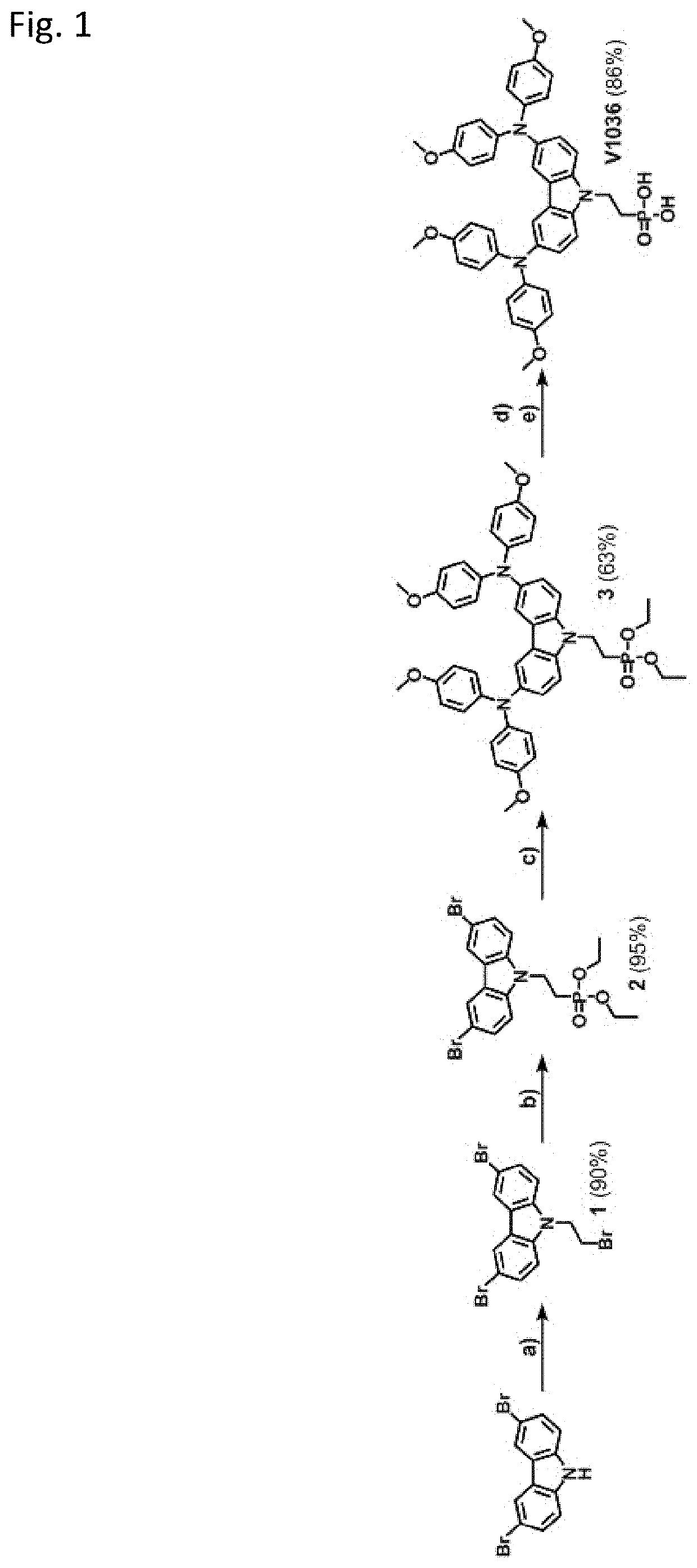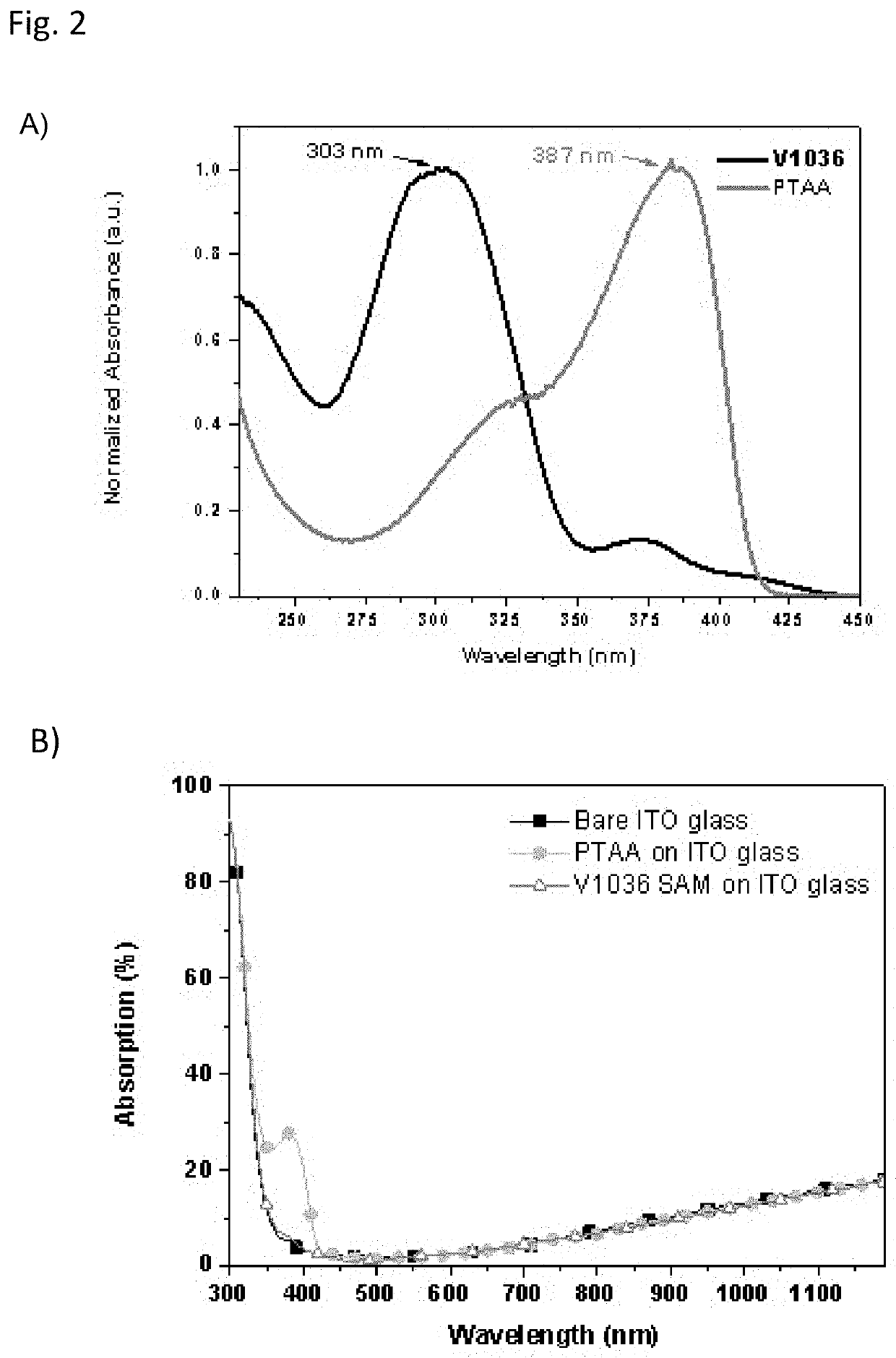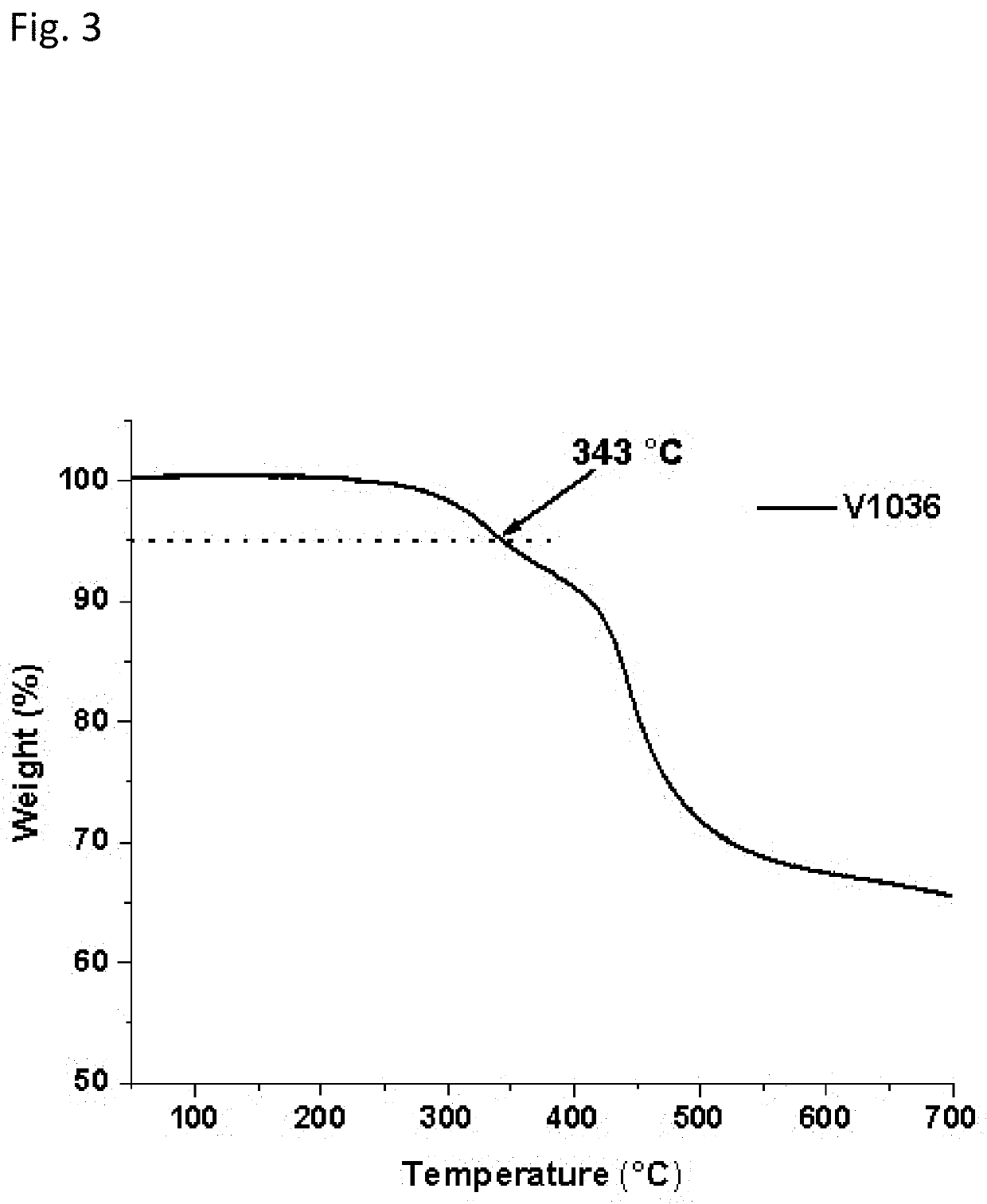Hole-transporting self-organised monolayer for perovskite solar cells
a solar cell and self-organised technology, applied in the manufacture of electrolytic capacitors, electrically-conductive paints, group 5/15 element organic compounds, etc., to achieve the effect of reducing material consumption, reducing thickness, and minimal parasitic absorption
- Summary
- Abstract
- Description
- Claims
- Application Information
AI Technical Summary
Benefits of technology
Problems solved by technology
Method used
Image
Examples
Embodiment Construction
[0054]Dimethoxy-diphenylamine substituted carbazole, functionalized with phosphonic acid (V1036), was synthesized. Dimethoxydiphenylamine substituted carbazole fragment can be found in several efficient HTMs for regular perovskite solar cells, and active hydrogen in the 9-th position of carbazole can be further used for the functionalization with phosphonic acid anchor groups (head-group).
[0055]Synthesis was done in a 4-step synthetic procedure (see FIG. 1), starting from commercially available materials. In the first step 3,6-dibromocarbazole was alkylated by 1,2-dibromoethane to give intermediate compound 1. In the next step, by means of the Arbuzov reaction aliphatic bromide was transformed into phosphonic acid ethyl ester 2. Further on, by means of the palladium-catalyzed Buchwald-Hartwig amination reaction, dimethoxydiphenylamine fragments were introduced to give compound 3. Finally, phosphonic acid V1036 was obtained by means of cleavage of the ester with bromotrimethylsilane....
PUM
| Property | Measurement | Unit |
|---|---|---|
| Volume | aaaaa | aaaaa |
| Volume | aaaaa | aaaaa |
| Volume | aaaaa | aaaaa |
Abstract
Description
Claims
Application Information
 Login to View More
Login to View More - R&D
- Intellectual Property
- Life Sciences
- Materials
- Tech Scout
- Unparalleled Data Quality
- Higher Quality Content
- 60% Fewer Hallucinations
Browse by: Latest US Patents, China's latest patents, Technical Efficacy Thesaurus, Application Domain, Technology Topic, Popular Technical Reports.
© 2025 PatSnap. All rights reserved.Legal|Privacy policy|Modern Slavery Act Transparency Statement|Sitemap|About US| Contact US: help@patsnap.com



